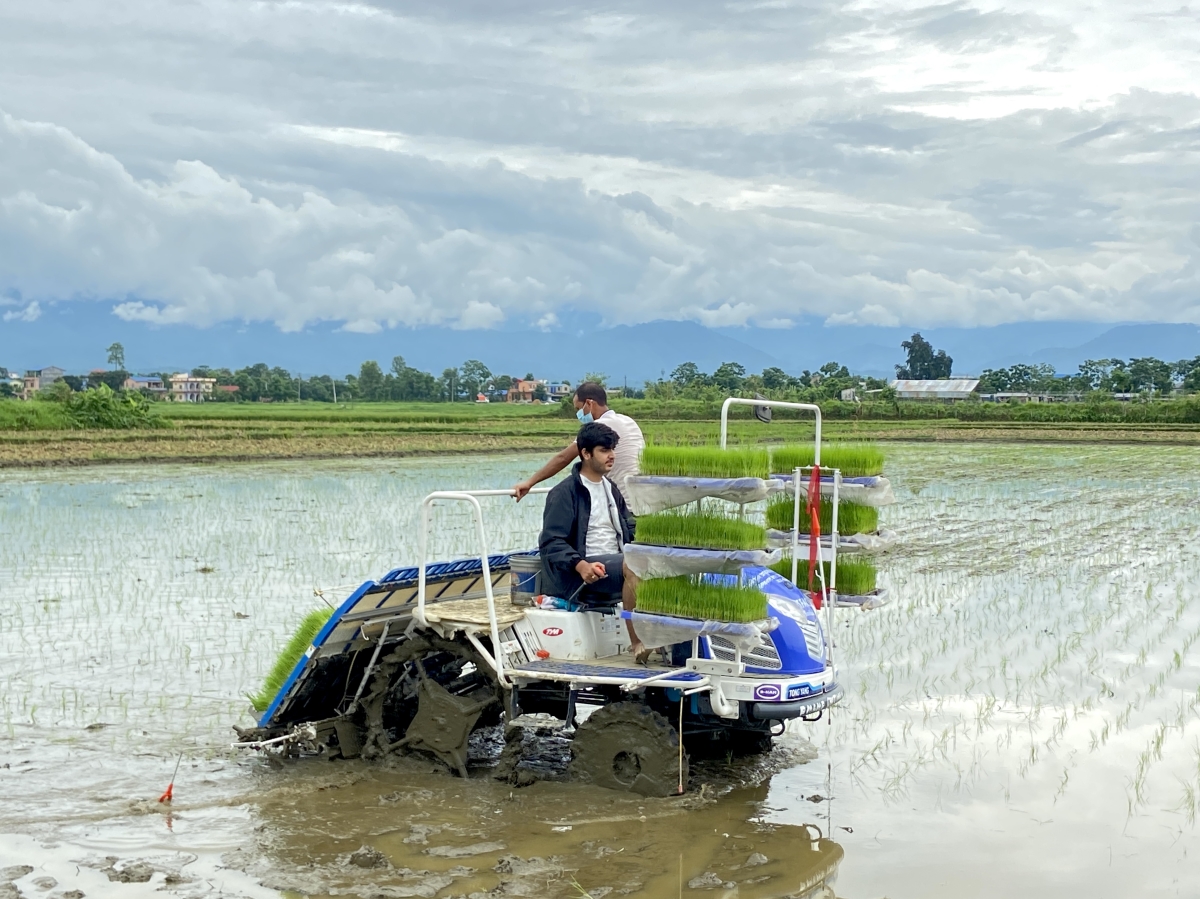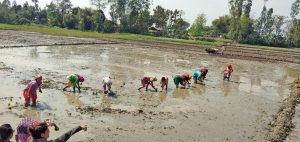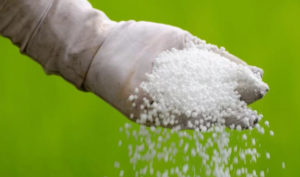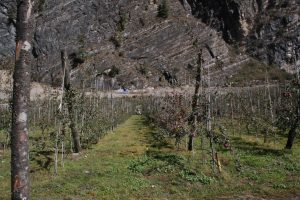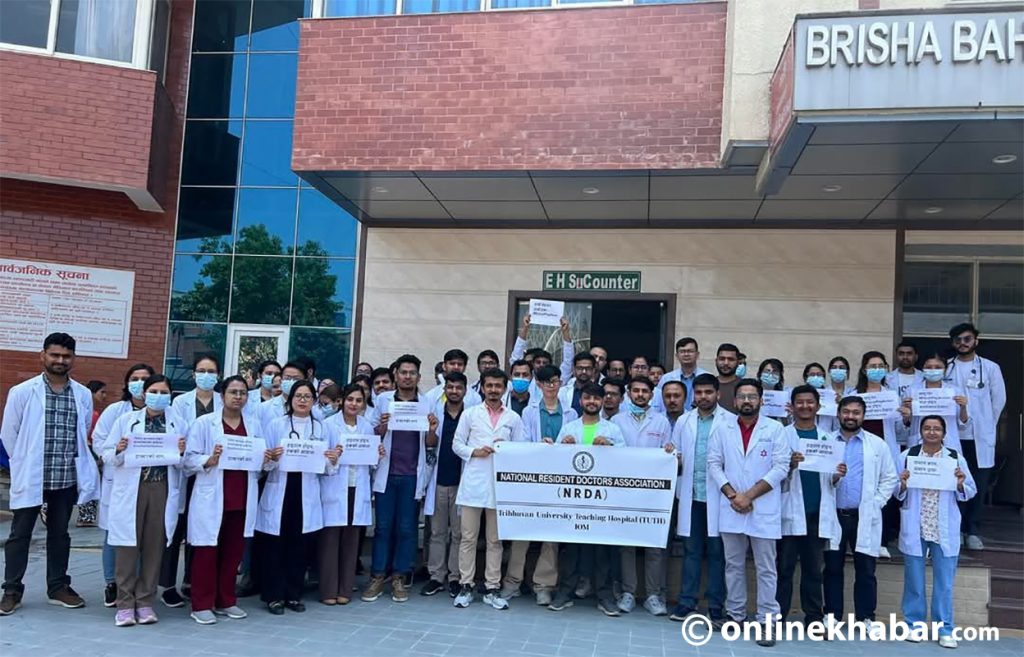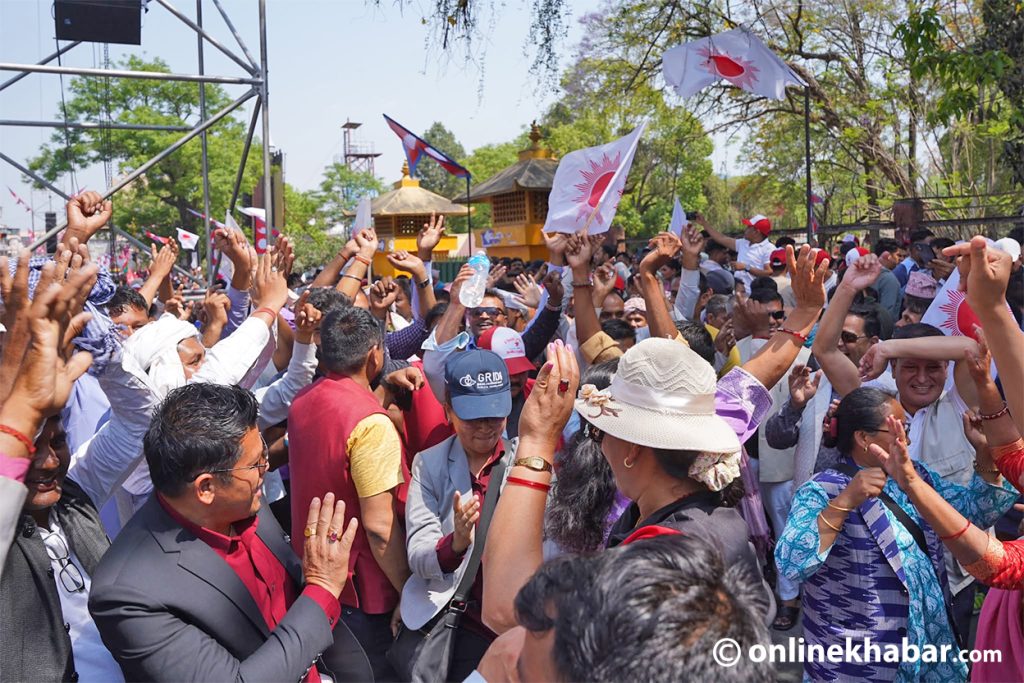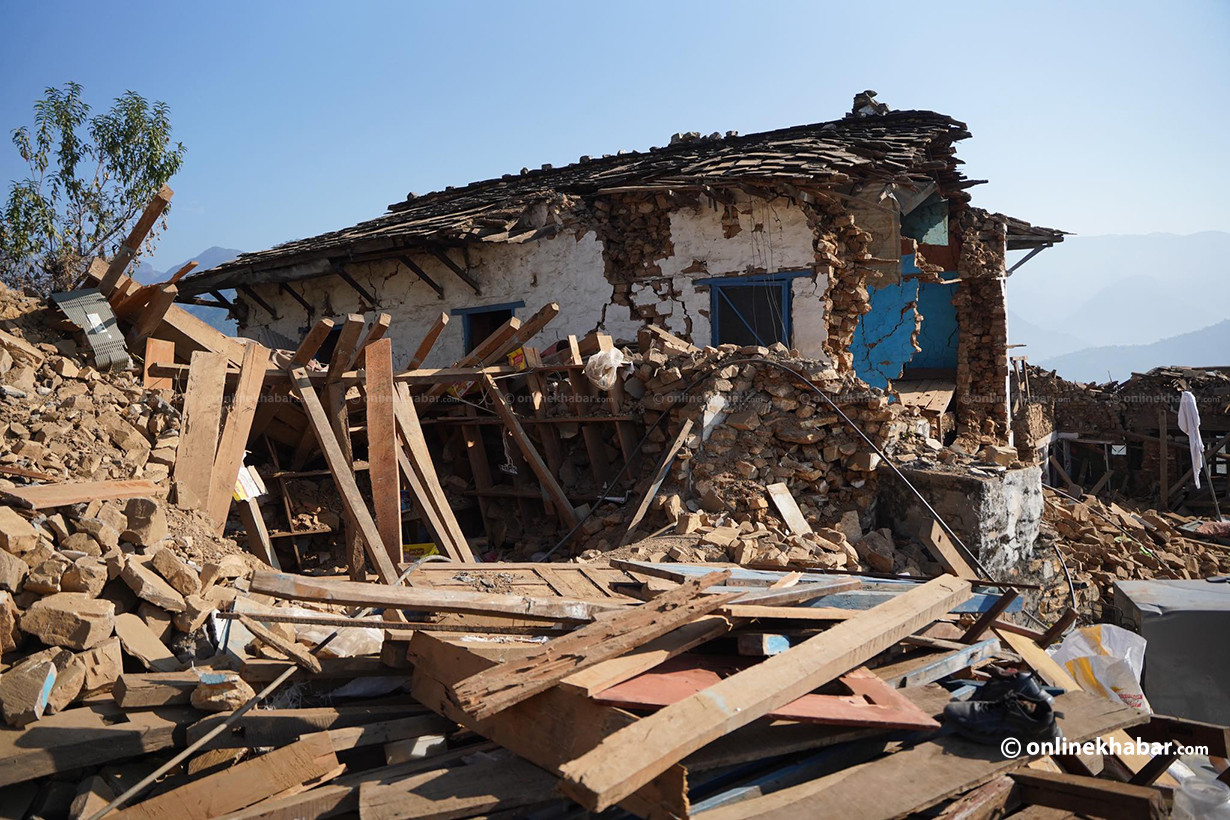Nepal marks Dhan Diwas on Asar 15, a very important agricultural festival for the country. While farmers in the Kathmandu valley were photographed planting saplings, playing in the mud, singing and dancing, away from Kathmandu, farmers in some parts of Terai were seen using modern equipment to plant the saplings there.
But of course, this was not the first time they used mechanical assistance in farming. Megh Nath Timalsena, a senior agricultural officer of the Prime Minister Agriculture Modernisation Project (Project Implementation Unit, Chitwan), says Nepal has been using machines to plant rice saplings since 2014.
“When I was in Jhapa, one Hari Silwal had returned to Nepal after studying in Europe. He might have observed and learned the European style and agricultural technologies there, hence he brought with him a four-wheel-drive riding-type rice planter, a combined harvester and 5,000+ plastic trays. In 2014, he introduced them in the Kankai municipality of Jhapa,” he explains.
In his current workplace in Chitwan, by then, farmers had already adopted the machines. So far, agricultural modernisation efforts have been expanded to all 77 districts of Nepal. But, high costs of the machines among other issues have barred the country’s agriculture modernisation and mechanisation drive, the stakeholders say, adding the government needs to take initiatives to resolve them.
It is not that the government has not done anything. Following a decision on January 10, 2017, the Prime Minister Agriculture Modernisation Project came into existence for 10 years with a budget of Rs 130 billion. Yet, it is failing, owing to the lack of support from the political leadership level, the officials complain.
Machinisation and rewards
For ages, humans have been using their hands to plant saplings. They break a sweat, get tanned in the sun and tirelessly continue to work in the field. It seems the change was never easy for people.
But, thanks to Silwal, Timalsena had his first experience watching how modern machines could change the face of agriculture. Still impressed by the modern marvel, he says, “Traditional methods are precious and we should definitely respect them, but modernisation in agriculture is important to adopt new ways and result in efficient harvest.”
But, do the farmers really need mechanisation instead of following the old ways? PMAMP Programme Director Baikuntha Adhikari says yes. “The whole agricultural scenario has seen a decline in Nepal. There are physical risks involved, which drives people away naturally. Agriculture also requires more labour so people today refrain from that. And on top of all, people now have new, better, easier sources of income, driving them further away,” he justifies, “So, in this scenario, we need mechanisation not just to maximise the human resources we have but also to maximise the productivity and make it uniform.”
Sandesh Poudel, an agricultural engineer at the same office, seconds Adhikari. “The machines can decrease the labour input, making farmers more efficient and resulting in more harvest. This in return makes them independent.”
For example, the rice planter machine used today allows farmers six saplings at a time instead of one and decreases the labour by 40-50 per cent. According to Poudel, the saplings are treated and kept in a tray that then efficiently places them into the soil. The machine can cover one bigha (around 72,900 square feet) of land per hour, decreasing the time spent in the field.
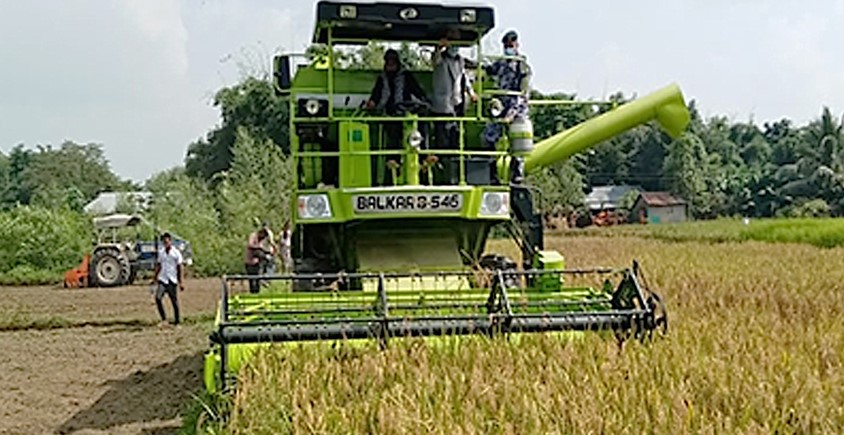
Likewise, another useful modern marvel is the bailer machine that collects the hays, rolls and bundles them into a bale. This can be packaged and sold as cattle feed and a requirement for mushroom farming. This reduces costs and the farmers can avoid burning them.
According to some case-based data collected by the Prime Minister Agriculture Modernisation Project (PMAMP), maize farming in Chitwan saw a decrease in seed sowing cost by 14 to 25 per cent and a decrease in labour cost by half. In another case, Bardiya saw a 70 per cent cost reduction in land plotting, and the use of reaper has reduced the labour cost by more than 70 per cent whereas the use of thresher has reduced the labour cost by more than half.
On the other side of the country, Manang, Mustang and Jumla saw a 1,000 per cent increase in apple production (from 300 per hectare to 3,000) and a decrease in fruit-bearing years with the adoption of high-density apple farming. Similarly, there was an increase in potato production in Bardiya, Nuwakot, Sindhupalchok, and Dadeldhura. Also, the increase in hybrid maize production in Khotang, Morang, Jhapa, and Dang gave new hopes to farmers.
It has been at least six years since the new technology was adopted. Yet a conclusive study about the overall impact, though obvious, has not been studied, says the duo. Neither has anyone conducted a cost-benefit analysis. “Nevertheless, in the recent chaite dhan (winter paddy) harvest, we saw a 5 to 10 per cent increase in production. But, because the crops were earlier treated with salt water, that might have increased the production too,”
However, even with the benefits, he adds, there is hesitation among farmers to adopt the new technology, “We are still in the adaptation phase. Many are reluctant to change. Those who have changed their ways are benefitting, but full adaptation will still take time and strong advocacy to accelerate the transition.”
Mechanising approach
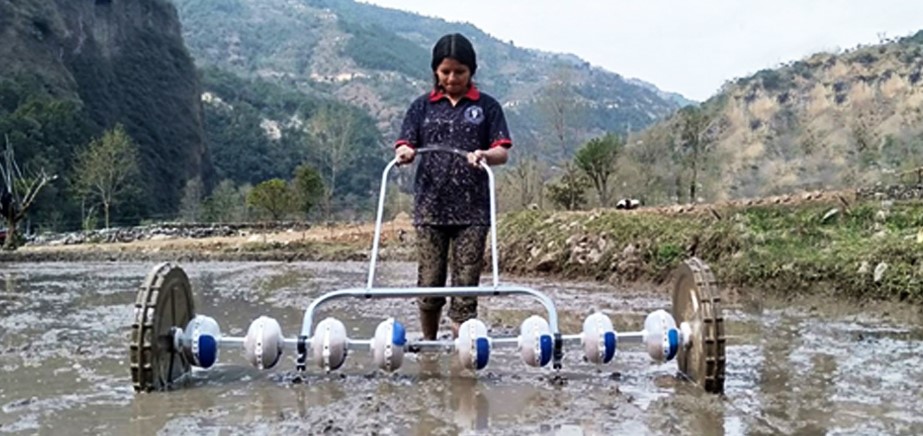
The project says there are different kinds of machines of various sizes and usages that are in operation across the country. They assist farmers in various stages and aspects of farming, production and marketing.
In total, according to the data collected by the project up to the financial year 2019/20, there are 2,368 machines in use. Out of them, harvester, thresher, reaper and rice transplanter used in the rice production account for up to 120 machines.
According to stakeholders, the concept and technology of most machines used in Nepal started in Japan and Korea whereas the machines imported are from Korea but with Japanese technology. It is also the technology used in the majority of South Asia, explains Timalsena.
Critical concerns
Though beneficial, there are very few farmers, if any, who has purchased the machines on their own. The majority in operation today were purchased with the aid of the government. “They need government sponsorship or heavy subsidiaries to be able to use it. In Jhapa, the authorities gave machines with 85 per cent aid,” an official says.
“Farmers cannot afford it. A single heavy machine is heavy and costs an investment of two million rupees. Also, because the machines are used only for around a month and shelved for the next 11 months, it gives a low return in investment (or ROI) and more burden to the farmers to buy on their own,” the official adds.
For example, Surya Bogati, a local farmer in Khairhani municipality-13 of Chitwan, says he has purchased the harvester in cooperation with other farmers that they use in turn. “It has been five to seven years that we have been using it. It takes four hours to cover two bighas of land.”
“But, in Biratnagar, Nepal Krishi Company in support of Buddha Air has purchased the machine solely,” Timalsena adds, “The government only distributes seeds and organises occasional training, which is not enough. If we are to accelerate the modernisation, we need the proper equipment.”
On the other hand, Adhikari says neither the number nor the pace of progress is satisfactory. “There are many factors starting from the budget itself. In five years, the project has spent some 61 per cent of the budget but the mobilisation of the resources is not satisfactory.”
The project’s fate

He feels the Prime Minister Agriculture Modernisation Project has failed to meet the expectations of stakeholders in the country.“It came into existence to introduce modern approaches in the Nepali agriculture space. The project aimed to better the production, make Nepal self-sufficient and promote the agro-economy of the country. For this mechanisation, modernisation and alternative agricultural approaches have been pushed forward simultaneously,” he argues, “But, not just the people outside but those within the organisation are not fully in sync with the organisation view. On top of that, the ecosystem among the departments of the Agriculture Ministry and other ministries [roads, infrastructure development] also has been poor and it has resulted in us lagging behind our work.”
“Everyone thinks it is our responsibility alone; there is no coordination that we need.”
So far there are 4,372 pockets, 606 blocks, 106 zones and 16 super zones. The project supervises them with 58 operating PIA units in 77 districts of Nepal. “But, we lack enough human resources. We have four or five officials where we need 20.”
He adds the political instability, coupled with frequent changes in the project office team, has hindered its progress.
Given the current progress, Adhikari predicts that the office will not be able to meet its objectives at the end of the project maturity, five years later. “With today’s graph, we can sadly only achieve 70 per cent of the objective.”
“But, we still have five years. If we can change our ways, mobilise the resources, get all the stakeholders from ministries to the local level to coordinate and even get the additional budget, the original objective of the project can be achieved. We can only hope.”



